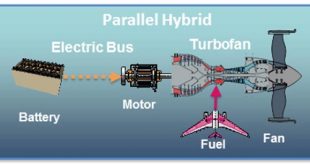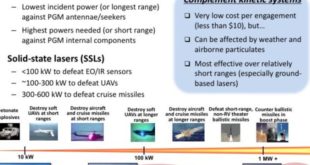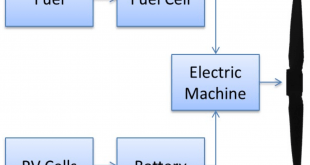Humanitarian Crisis scenarios occur frequently and they typically require immediate rescue intervention. In many cases, the scene conditions may be prohibitive for the human rescuers to provide instant aid, as they have to act within hazardous conditions, like collapsed buildings, air-poisoned, or radioactive environments. Many organizations and research teams are …
Read More »Hybrid-Electric Propulsion for Military aircraft to power radars to laser weapons payloads
The civil global aviation market has experienced considerable economic growth in recent years and will keep increasing. It is estimated that around 1300 new international airports will be required, and the commercial aircraft fleet will double by 2050, with a projected passenger throughput of 7.2 billion in 2035. This growth …
Read More »Armed Crop Dusters for Security and Military Missions
A crop duster, is usually, an aircraft used for dusting or spraying large acreages with pesticides. Aerial spraying and dusting permit prompt coverage of large areas at the moment when the application of pesticide is most effective and avoid the need for wheeled vehicles that might damage crops. Agricultural …
Read More »Integrated Air and Missile Defense (IAMD) protect against full spectrum of threats
Militaries around the world are increasingly facing a formidable strategic and threat environment in terms of complexity, lethality, range, sophistication, and number of threats. These range from Fifth-generation stealth fighters, cruise and ballistic missile and unmanned air vehicle technology that are becoming widely proliferated to become more accessible to emerging …
Read More »Petawatt laser technologies for Ballistic and Cruise to Hypersonic weapons defense
The Laser Directed Energy Weapons (DEWs) offer a transformational ‘ga me changer’ to counter asymmetric and disruptive threats, while facing increasingly sophisticated traditional challenges. Laser technology provides major advantages for military applications over kinetic weapons due to High precision and rapid on-target effect, precise and scalable effects, avoidance of collateral …
Read More »CEPA proposes NATO Defense Strategy Integrating Emerging and Disruptive Technologies
After the Cold War, the US, NATO, and the world at large shifted focus to combating terrorism and capacity building in fragile states. As a result, the urgency to develop and field new systems to combat potential near-peer competitors eroded. Without this motivation, NATO and its allies – especially larger …
Read More »Army’s Combined Arms Maneuver and Doctrine proving critical for mission success
Reducing the adversary’s capabilities has always been the fundamental objective of any military action. Land maneuver can be defined as the manner in which forces are committed on the battlefield. Combined arms is an approach to warfare that seeks to integrate different combat arms of a military to achieve mutually …
Read More »Hybrid controllable solid propulsion thruster technology for next generation launch-vehicles and missiles
The function of the propulsion system is to produce thrust, which is the force that moves a rocket through air and space. Different propulsion systems generate thrust in different ways, but always through some application of Newton’s third law of motion. In any propulsion system, a working fluid is accelerated …
Read More »Hybrid Electric Propulsion System (HEPS) for Unmanned Aerial Vehicles can enhance military missions
The employment of UAVs by various industries and in Defense and Security missions are enabled by their propulsion system to provide them with the necessary power to propel the aircraft for forward flight or hover. Propulsion systems can advance the flight time or endurance of a UAV which is influenced …
Read More »Active Protection Systems (APS) on Military tanks Detect, Track and Destroy Enemy RPGs and Anti-Tank Guided Missiles
The war in Ukraine has highlighted the importance of well protected armoured vehicles. The increased use of artillery weapons and precision rocket systems along with strikes against targets of opportunity using drones, caused widespread casualties among infantry soldiers caught out in the open. Such losses are again bringing into focus …
Read More » International Defense Security & Technology Your trusted Source for News, Research and Analysis
International Defense Security & Technology Your trusted Source for News, Research and Analysis




